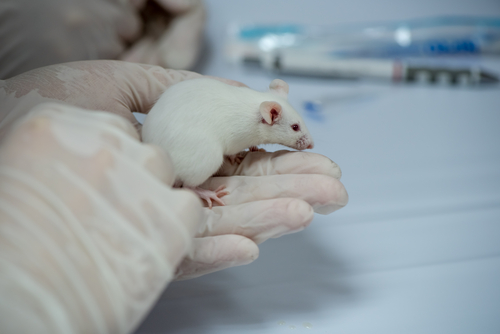Arginase 1 Protein May Protect from Sjögren’s-related Dryness, Mouse Study Suggests

The arginase 1 protein appears to protect from dryness symptoms associated with Sjögren’s syndrome, potentially by lowering gland inflammation and increasing fluid secretion, a new study in mice indicates.
The findings suggest this protein — a liver enzyme — as a possible therapeutic target for this condition.
The study, “Arginase 1 is involved in lacrimal hyposecretion in male NOD mice, a model of Sjögren’s syndrome, regardless of dacryoadenitis status,” was published in The Journal of Physiology.
The lacrimal and salivary glands, responsible for making tears and saliva, are necessary to keep the eyeballs and the mouth moist and healthy. Sjögren’s syndrome is characterized by the inflammation of these glands, leading to symptoms of dryness.
Although reduced tear and saliva secretion is a well-established feature of Sjögren’s, it’s not clear exactly what biochemical mechanisms cause these symptoms. To date, most research in this regard has focused almost exclusively on the role of inflammation, with little study of possible non-inflammatory mechanisms.
Now, researchers in Japan hypothesized that non-inflammatory factors might be involved in these dryness mechanisms. Thus, they looked more closely at the lacrimal glands from male non-obese diabetic (NOD) mice.
In this established model of Sjögren’s, males tend to get more lacrimal gland inflammation (dacryoadenitis), whereas females typically have more inflammation in the salivary glands.
The scientists determined that these mice have normal tear secretion until they are about six weeks old, at which point lacrimal gland inflammation develops and tear secretion declines markedly (lacrimal hyposecretion).
The team then compared what was happening in the lacrimal glands in terms of gene expression. Of note, gene expression refers to which genes are “turned off” or “turned on,” and to what extent. The focus here was on determining what was different before inflammation in the tear glands had developed (at week 4), compared with after inflammation was visible.
While most of the genes identified were associated with inflammation, some were not. One particular gene not involved in inflammation, ARG1 — which codes for the protein arginase 1 (Arg1) — was markedly decreased after the onset of lacrimal gland inflammation and tear hyposecretion.
Multiple molecular analyses confirmed this reduction in gene expression, and showed an accompanying decrease in levels of arginase 1 protein.
“These results show that male NOD mice have low levels of arginase 1 in their lacrimal glands at and after 6 weeks of age, and suggest that arginase 1 could be involved in development of lacrimal hyposecretion and/or inhibition of inflammation in the lacrimal glands of those mice,” the researchers wrote.
Turning to male NOD mice that were engineered to lack the gene Myd88, the researchers wrote that that the animals “show little or no infiltration of inflammatory cells into the lacrimal glands.”
Despite the absence of inflammation, these mice had similar impairments in tear secretion, the team found, noting that “it is highly likely that lacrimal gland inflammation in NOD mice has little effect on the development of lacrimal hyposecretion.”
Just as in the mice with inflammation, the expression of Arg1 was significantly diminished in the lacrimal glands of Myd88-deficient mice. In this model, low Arg1 expression, but not inflammation, was consistently linked with reduced tear production.
“Together, these findings indicate that a non-inflammatory factor, arginase 1, is involved in lacrimal hyposecretion in male NOD mice, regardless of dacryoadenitis status,” the researchers wrote.
The researchers then treated wild-type mice (mice with no modeled disease) with CB-1158, a small molecule that blocks the activity of arginase 1. Consistent with the other research findings, inhibiting arginase 1 significantly decreased tear secretion in these mice. CB-1158 also reduced saliva secretion, though not all measurements were statistically significant.
“This indicates that arginase 1 may contribute to fluid secretion not only in the lacrimal gland but also in the salivary gland,” the researchers wrote.
The exact mechanism by which arginase 1 affects tear secretion remains unclear. Based on available knowledge of the protein, the researchers speculated that it could involve differences in cellular energy stores, or even be the result of indirect inflammation-modulating effects.
Further research will be needed to discern the exact mechanism, the team said.
“Even though the mechanism remains unknown, our findings are an important step forward to elucidate the physiology of fluid secretion and pathology of SS [Sjögren’s syndrome] and dry eye/mouth syndrome,” the researchers wrote.
“Arginase 1 may be a target for prevention and/or therapy of fluid hyposecretion,” they concluded.






